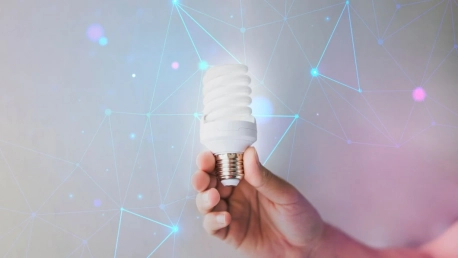Australia is at the forefront of integrating advanced smart technologies in its energy sector. As digitalization improves efficiency and provides consumer convenience, it also presents significant cybersecurity challenges. Protecting consumer data and ensuring the nation’s cyber wellbeing are becoming increasingly essential as more smart energy solutions are adopted. Australia must now strengthen its cybersecurity defenses to keep pace with these technological advancements, safeguard individual privacy, and protect national security.
The Rise of Smart Energy Systems
Navigating the Benefits and Vulnerabilities
The adoption of smart energy devices in Australian homes and businesses is growing. These devices can improve control over energy use but also act as potential gateways for cyberattacks. The connectivity they provide, although beneficial, could compromise user privacy and critical infrastructure if not adequately protected. Recognizing this, Australian authorities emphasize the need for solid cyber defenses to maintain the reliability of smart technology.Smart energy devices do more than just manage energy consumption – they gather and transmit user data, creating a treasure trove for invaders. As a result, data breaches could have serious consequences, including privacy issues and manipulation of energy systems.
Australia’s Proactive Initiatives
The Smart Energy Mission (SEM) and the Critical Infrastructure Protection and Resilience Mission (CIPR) are key initiatives launched to protect against cyber threats in the energy sector. These programs aim to bolster the sector’s resilience and mitigate risks associated with interconnected technologies. While the SEM propels technological advancements in the energy industry, the CIPR addresses the security vulnerabilities these technologies might face.Reinforcing resilience means more than deterring threats – it also involves planning for post-attack recovery. The CIPR collaborates with energy companies to establish strong incident response strategies. Conversely, the SEM advocates for the implementation of digital solutions that keep potential cyber risks in check.
Strategies for Cybersecurity and Privacy
Multi-disciplinary Approach to Security
Security experts recommend a multi-disciplinary approach that evolves alongside technological progress. Risk assessments and privacy protections must evolve to address new cyber vulnerabilities, incorporating both technological and human elements like training, culture, and policy enforcement.Collaboration across different disciplines is vital. Dr. Carolyn Huston and Dr. Marthie Grobler exemplify this approach by combining their expertise from various fields to confront data privacy and security challenges. This recognizes the need for a broad perspective to maintain effective security.
Government and Industry Synergy
The integration of security into infrastructure planning is crucial for Australia’s smart energy future, as seen with initiatives like the National Energy Analytics Centre (NEAC). This collaboration between the public and private sectors helps standardize threat analysis and response measures, fitting them to industry-specific needs.Partnerships like the NEAC can solidify Australia’s smart energy infrastructure, supporting an environment where security and innovation flourish together. Such collaborative defense strategies protect against digital threats and foster a resilient energy sector.
Empowering Consumers to Protect Their Data
The Role of Individual Users
Individuals play a crucial role in protecting their data by using strong passwords and understanding the privacy policies of their energy service providers. Each user contributes significantly to the overall cybersecurity of the community.By demanding transparency from companies regarding data use, consumers enhance their power and transition from passive service users to active protectors of their privacy. Ongoing awareness and proactive measures ensure the security of our shared digital spaces.
Encouraging Critical Engagement
Service companies should promote proactive data management among consumers. It’s important for users to understand privacy policies and to take an active role in safeguarding their digital identity. This engagement ensures data security remains a priority across services.The partnership between service providers and consumers in data privacy upholds a system where both parties work together to enhance security protocols continuously. Such collaborative environments make data security a shared responsibility.
The Path Ahead for Australia’s Smart Energy
Balancing Innovation and Cybersecurity
As Australia moves towards more advanced smart energy systems, it has to navigate the complex cybersecurity landscape carefully. The balance between innovation and security is essential for sustainable development. All stakeholders must strive for vigilance and adapt based on the learning from cybersecurity challenges. Secure practices are key to a foundation for long-lasting and responsible innovation in the energy sector.
Fostering a Culture of Cyber Hygiene
Promoting strong cyber hygiene practices is essential in securing Australia’s defenses, especially as the smart energy sector evolves. Creating a cultural change where cybersecurity becomes part of daily practice for individuals and organizations is necessary.A commitment to continuous education and strict cyber hygiene is key. As the energy sector transforms, a united approach towards protecting our increasingly interlinked infrastructure is crucial. By intertwining vigilant practices with new technologies, Australia paves the way for a resilient digital future.









